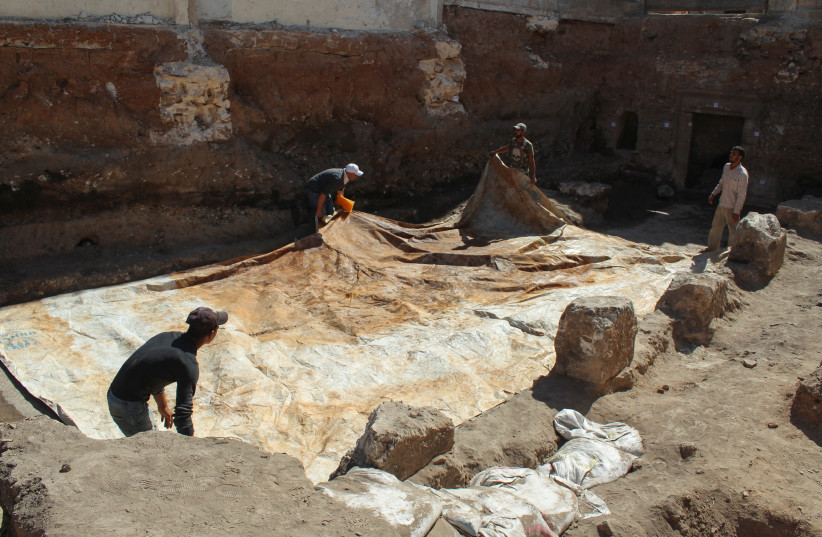A largely intact Roman-era mosaic depicting the mythical Trojan War was discovered in the ruins of an ancient Syrian city earlier this week.
Measuring 120 square meters (1,300 square feet), the mosaic is thought to be 1,600 years old and depicts a range of mythological figures, as well as rare panels depicting the Trojan War.
The mosaic was discovered in a 4th-century building in the city of Al-Rastan, during excavations being carried out by the Syrian General Directorate of Antiquities and Museums.
"What is in front of us is a discovery that is rare on a global scale," Hamman Saad, a senior official at Syria's General Directorate of Museums and Antiquities, told the Associated Press.
Saad added that as well as the depictions of the Trojan War, the mosaic portrays the Roman god Neptune, the mythological hero Hercules, and the mythological Amazonian queen Penthesilea.
Excavations are expected to continue on the site, Saad added, saying: "We can't identify the type of the building, whether it's a public bathhouse or something else, because we have not finished excavating yet."

According to DW News, some speculate that the mosaic might be even larger than currently thought, with trustees from the Nabu Museum voicing hope that they will be able to purchase other buildings in Rastan with an eye to securing further heritage sites.
The Syrian Civil War and the excavations
Part of the mosaic was originally found under a house several years ago during the Syrian Civil War when opposition groups tried to dig tunnels underneath the local buildings. However, unlike the 2,000-year-old cultural monuments of Palmyra, the mosaic escaped the wreckage of war relatively unscathed. After the fighting in the area died down, Syrian and Lebanese businessmen bought the site and donated it to the Syrian government, according to DW News.
The Trojan War - fact or fiction?
According to Greek mythology, the Trojan War was a 10-year war waged against the city of Troy by the Greeks after Paris of Troy took Helen from her husband, King Menelaus of Sparta. While the mythical war has been depicted in many ancient Greek works of literature and art, it is most notably narrated in Homer's Iliad.
While the ancient Greeks believed that the Trojan War took place in the 13th or 12th century BCE, by the 1800s, the event was largely seen as a work of fiction, and the existence of Troy was thought to be simply made up.
However, excavations in Turkey in 1868 uncovered the ruins of an ancient city that matched ancient Greek descriptions of Troy, and today the question of whether or not the Trojan War was a real event or simply a work of fiction remains disputed.
